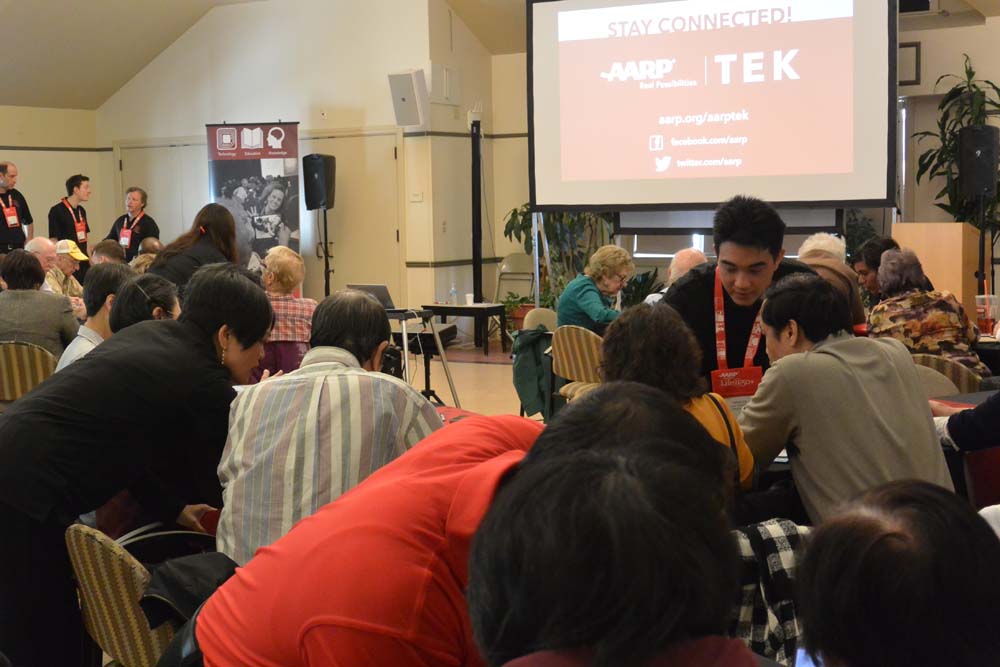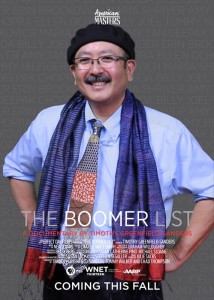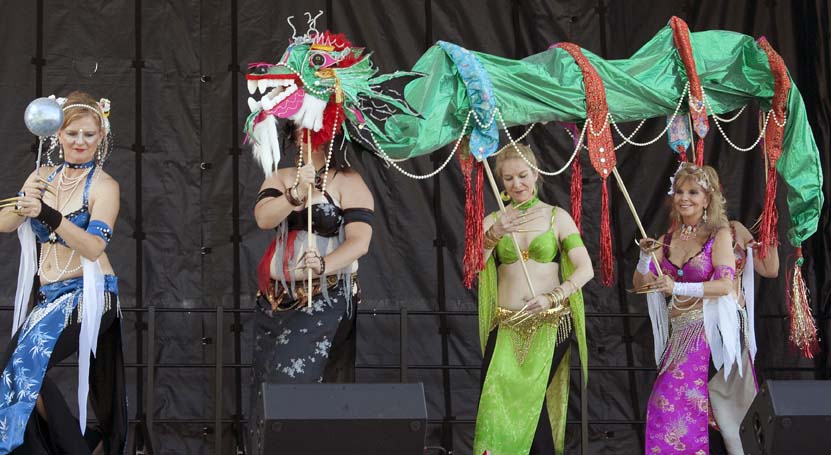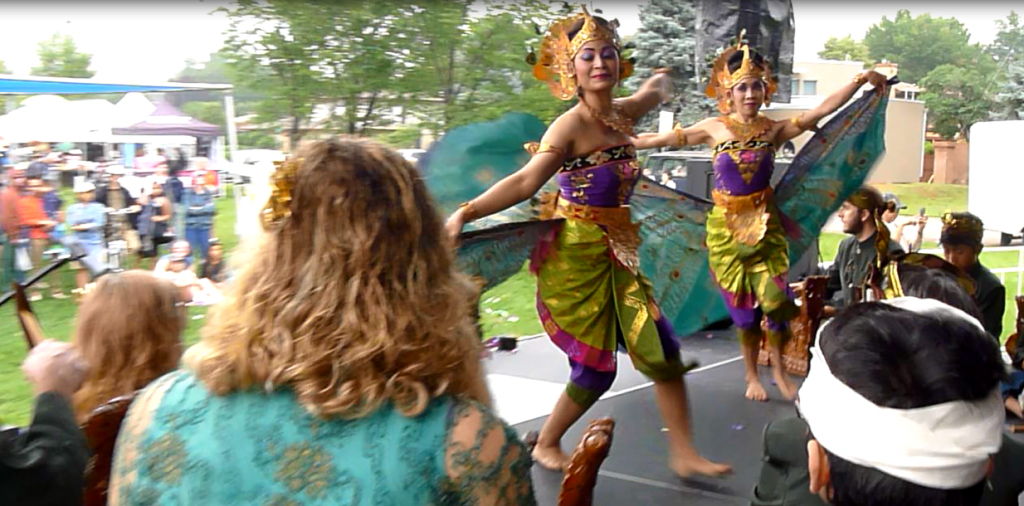
AARP’s TEK team helped elderly Chinese at a senior center in Boston learn to use smartphones, and they were sending texts ad shooting selfies at the end of the session.

This was a fun photo booth at the AARP Member Convention in Boston, which promoted an upcoming PBS series about baby boomers sponsored by AARP. Nope, I’m not actually in the series…
I started my career as a music critic and then a reporter, so I’ve always been able to write about pop culture – especially the pop culture of my generation, the baby boomers. Then when the Internet came along, I was able to move over to work almost exclusively in digital media, and these days I work in and speak about social media. And since I started writing my “Nikkei View” column and blog, I’ve been part of a growing chorus of Asian American voices (like the JACL’s Pacific Citizen, which is about to re-launch its website after a two-year hiatus!) covering issues and stories that mainstream media frankly tends to ignore.
So I couldn’t believe my great fortune last month when I was named the 2014 Asian American Journalists Association’s AARP Social Media Fellow.
AARP, if you aren’t familiar with the organization, is the American Association of Retired People, whose members are 50 years old and older. That means that this year, the youngest baby boomers are turning 50 and can join AARP (the baby boom went from 1946 to 1964).
Continue reading













